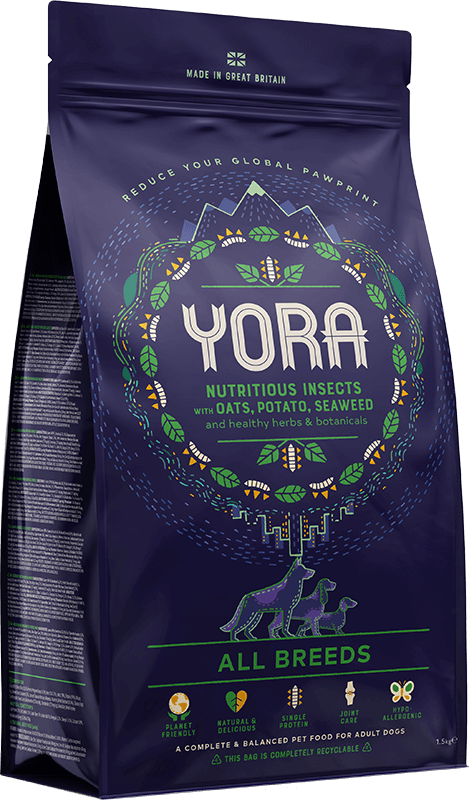Yes, we are that stereotype. After over 12 months of lockdown, and knowledge that working from home would be much more routine than ever before, we finally got a long-awaited puppy. And, a few short weeks later, I realised every promise my kids ever made about the care and feeding of said puppy were falsehoods executed with epic commitment.

His name is Chewbacca Hot-Tub Prince Philip Tamblin (note to parents: this is what happens when you promise to let your kids name the puppy and insist on keeping your word). Don’t be fooled by his adorable appearance. He is a fearsome guard dog.
Chewy came home with a bag of turkey and rice dry dog food. I was happy to keep him on turkey and rice, because the average carbon footprint of poultry production is significantly lower than the average carbon footprint of the equivalent magnitude of beef. For example, according to our world in data:
“The average footprint of beef, excluding methane, is 36 kilograms of CO2eq per kilogram. This is still nearly four times the mean footprint of chicken. Or 10 to 100 times the footprint of most plant-based foods. “
So, I do consider poultry based pet foods to be a better alternative to lamb or beef based pet food options. That being said, I did feel aggrieved that while I was trying (and often failing!) to limit my own meat consumption to once or twice a week, my dog was getting to have meat every day. Who said jealousy is a deadly sin? Well, in this case, my jealousy led me to investigate more sustainable alternatives.
At this point, I came across Yora Insect Protein pet food as an option. I had heard of it on the odd niche media spot – cricket cookies and all that swiftly becoming a hippie trend. From an emissions and efficiency point of view, it does seem like the case for insect protein stacks up – see Grub’s Up for some interesting details from a well trusted source of investigative journalism, The Economist. You probably need an Economist subscription to read the whole thing, but you can see from the preview, key findings are based on an FAO report.
Because I’m a genius, I thought, “what better way to test insect protein consumption than on a dumb beast who couldn’t care less if his totally processed kibble comes from a bird or a bug. He eats bugs in the garden on his own volition all the time”.
I also investigated the efficiency of insect protein to see if there was something in the hype. It turns out insects do not use energy to maintain a high body temperature, which is one of the main reasons they are so efficient at converting food into edible protein. They also contribute to the breakdown of food waste when they are mass produced.
There is still a lot to learn and develop regarding insect protein. When used as a direct replacement protein source (such as the case with pet food), it has been estimated in the above study that the emissions associated with chicken production for meat could be between 3 and 6 times higher than their insect equivalents. (Chickens produced for meat are called broilers in agricultural languages for some unknown reason to me, which is worth noting for anyone clicking the above link).
So, with that, I forked over nearly double (gulp) the usual dog food price I was paying to give insect protein a go. And, I have to say, Chewy absolutely loves the stuff. He definitely liked it more than his usual turkey and rice stuff (but, he’s a dog, so let’s not give him too much credit). So, all-in-all, if you are the sort of pet owner that splashes out on expensive pet food anyway, I’d definitely recommend insect-based protein pet foods for a more sustainable choice. If not, go for turkey or chicken wherever possible to reduce the emissions associated with your pet food’s production.
